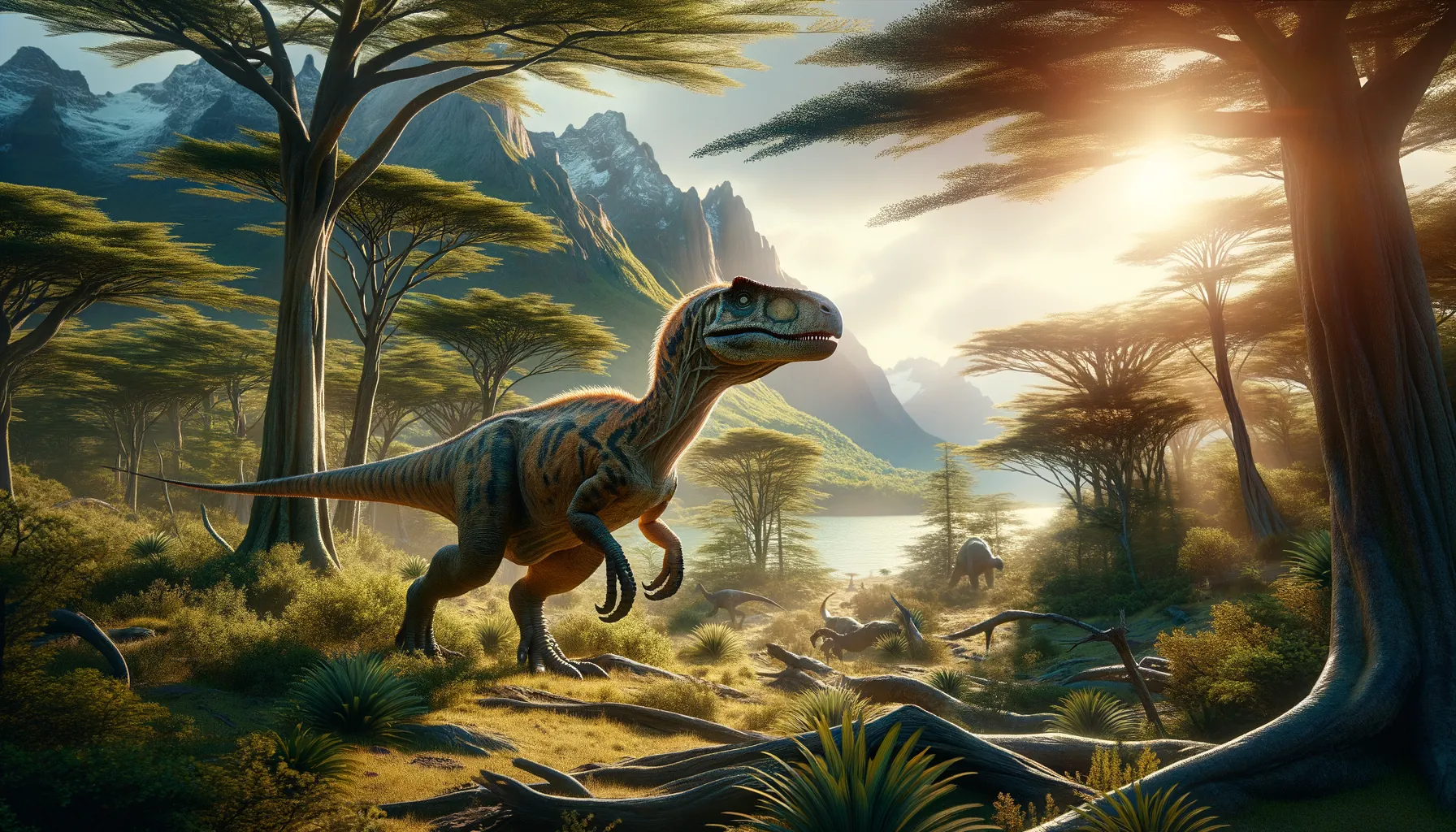
Orkoraptor
Swift and agile, a predator of Patagonia!
Period
Cretaceous
Length
About 6 to 7 meters in total length.
Height
Estimated to be around 1.5 meters at the hip.
Weight
Approximately 200 to 300 kilograms.
Orkoraptor was a theropod dinosaur that roamed the landscapes of South America during the Late Cretaceous period. It belonged to the family of raptors, known for their agility and predatory skills. Its discovery in Patagonia added valuable information to our understanding of dinosaur distribution across ancient continents, highlighting diversity among predatory dinosaurs in that region. As a medium-sized predator, it likely played a significant role in its ecosystem.
Diet
Orkoraptor was a carnivore that preyed on smaller dinosaurs and possibly other animals within its reach. Its diet primarily consisted of meat, and it may have scavenged from carcasses when opportunities arose.
Hunting
As a predator, Orkoraptor likely used its agility and keen senses to hunt. It may have hunted alone or in small groups, utilizing stealth and speed to ambush prey in its Cretaceous environment.
Environmental challenges
Orkoraptor faced environmental challenges such as changing climates and volcanic activity in its region of Patagonia. It had to compete with other predators, which influenced its hunting strategies and territorial behavior. Seasonal variations in climate could also impact prey availability, requiring adaptability in its diet and hunting tactics.
Speed
Moderate, likely swift for short distances.
Lifespan
Estimated at around 20 to 30 years.
First discovery
Found in 2004 in Patagonia, Argentina.
Fun Facts
- Orkoraptor was a theropod dinosaur that lived during the Late Cretaceous period about 70 million years ago.
- It was discovered in Patagonia, Argentina, which is known for its rich dinosaur fossils.
- Orkoraptor's name means 'Orko thief,' with 'Orko' referring to a local river in Argentina.
- This dinosaur is believed to have been a carnivore, feeding on smaller animals and possibly scavenging as well.
- Orkoraptor's fossils provide insight into the diversity of dinosaur life in South America during the Cretaceous period.
- Unlike some of its larger and more famous theropod relatives, Orkoraptor was relatively small, measuring about 20 feet in length.
- The discovery of Orkoraptor helps scientists study the evolutionary relationships between different theropod dinosaurs.
Growth and Development
Orkoraptor likely experienced rapid growth during its early years to reach its full size quickly, reducing vulnerability to predators. As it developed, it would have honed its hunting skills, learning from experience to become a successful predator. Its growth rate and development patterns would have been influenced by environmental factors, such as food availability and competition.
Habitat
Orkoraptor lived in the diverse and dynamic environment of Late Cretaceous Patagonia, which included forests, river systems, and open plains. This varied habitat provided both opportunities and challenges for hunting and survival. The region's geological activity could have created barriers or new areas for the dinosaur to explore.
Interaction with other species
Orkoraptor would have interacted with various other species, both prey and competitors, in its ecosystem. It likely played a role in controlling the population of smaller dinosaurs. Interactions with other predators may have led to territorial disputes or competition over food resources.
Natural lifespan
Orkoraptor's natural lifespan was approximately 20 to 30 years.
Reproduction
Orkoraptor likely laid eggs in nests, similar to other theropods, with parental care potentially involved in protecting and nurturing the young. The reproductive strategy would help ensure the survival of the species in their natural habitat. Nesting sites would have been carefully chosen to provide safety and proximity to resources.
Social behaviour
Orkoraptor may have exhibited some social behavior, potentially hunting in pairs or small groups. Its social structure might have included communication methods for coordinating group activities during hunting or territorial defense. Such interactions could involve a combination of visual and vocal signals.
Fossil locations
Orkoraptor fossils have been found in the Patagonian region of Argentina. These discoveries provide significant insights into the diversity of predatory dinosaurs in South America. The presence of these fossils in multiple sites suggests a once widespread presence in its habitat.
